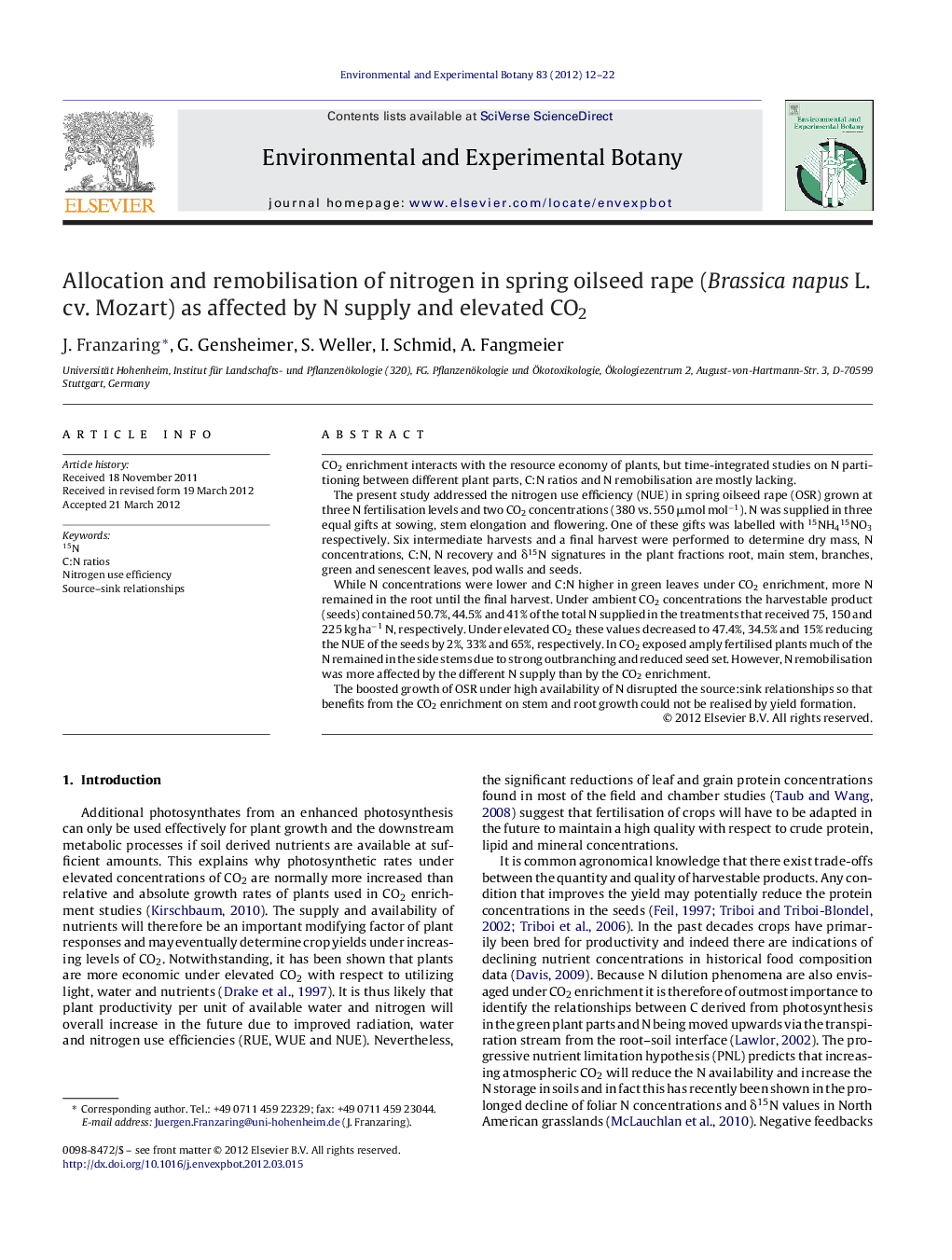| کد مقاله | کد نشریه | سال انتشار | مقاله انگلیسی | نسخه تمام متن |
|---|---|---|---|---|
| 4554612 | 1628094 | 2012 | 11 صفحه PDF | دانلود رایگان |

CO2 enrichment interacts with the resource economy of plants, but time-integrated studies on N partitioning between different plant parts, C:N ratios and N remobilisation are mostly lacking.The present study addressed the nitrogen use efficiency (NUE) in spring oilseed rape (OSR) grown at three N fertilisation levels and two CO2 concentrations (380 vs. 550 μmol mol−1). N was supplied in three equal gifts at sowing, stem elongation and flowering. One of these gifts was labelled with 15NH415NO3 respectively. Six intermediate harvests and a final harvest were performed to determine dry mass, N concentrations, C:N, N recovery and δ15N signatures in the plant fractions root, main stem, branches, green and senescent leaves, pod walls and seeds.While N concentrations were lower and C:N higher in green leaves under CO2 enrichment, more N remained in the root until the final harvest. Under ambient CO2 concentrations the harvestable product (seeds) contained 50.7%, 44.5% and 41% of the total N supplied in the treatments that received 75, 150 and 225 kg ha−1 N, respectively. Under elevated CO2 these values decreased to 47.4%, 34.5% and 15% reducing the NUE of the seeds by 2%, 33% and 65%, respectively. In CO2 exposed amply fertilised plants much of the N remained in the side stems due to strong outbranching and reduced seed set. However, N remobilisation was more affected by the different N supply than by the CO2 enrichment.The boosted growth of OSR under high availability of N disrupted the source:sink relationships so that benefits from the CO2 enrichment on stem and root growth could not be realised by yield formation.
► The CO2 fertilisation effect may interact with the development of oilseed rape and reduce the overall N recovery to the seeds.
► Source–sink relationships are affected and seed yields are reduced despite the accumulation of more biomass.
► Plant breeding should regard the increased availability of photosynthates, their feedbacks on nitrogen uptake and necessary changes in sink sizes in the future
Journal: Environmental and Experimental Botany - Volume 83, November 2012, Pages 12–22